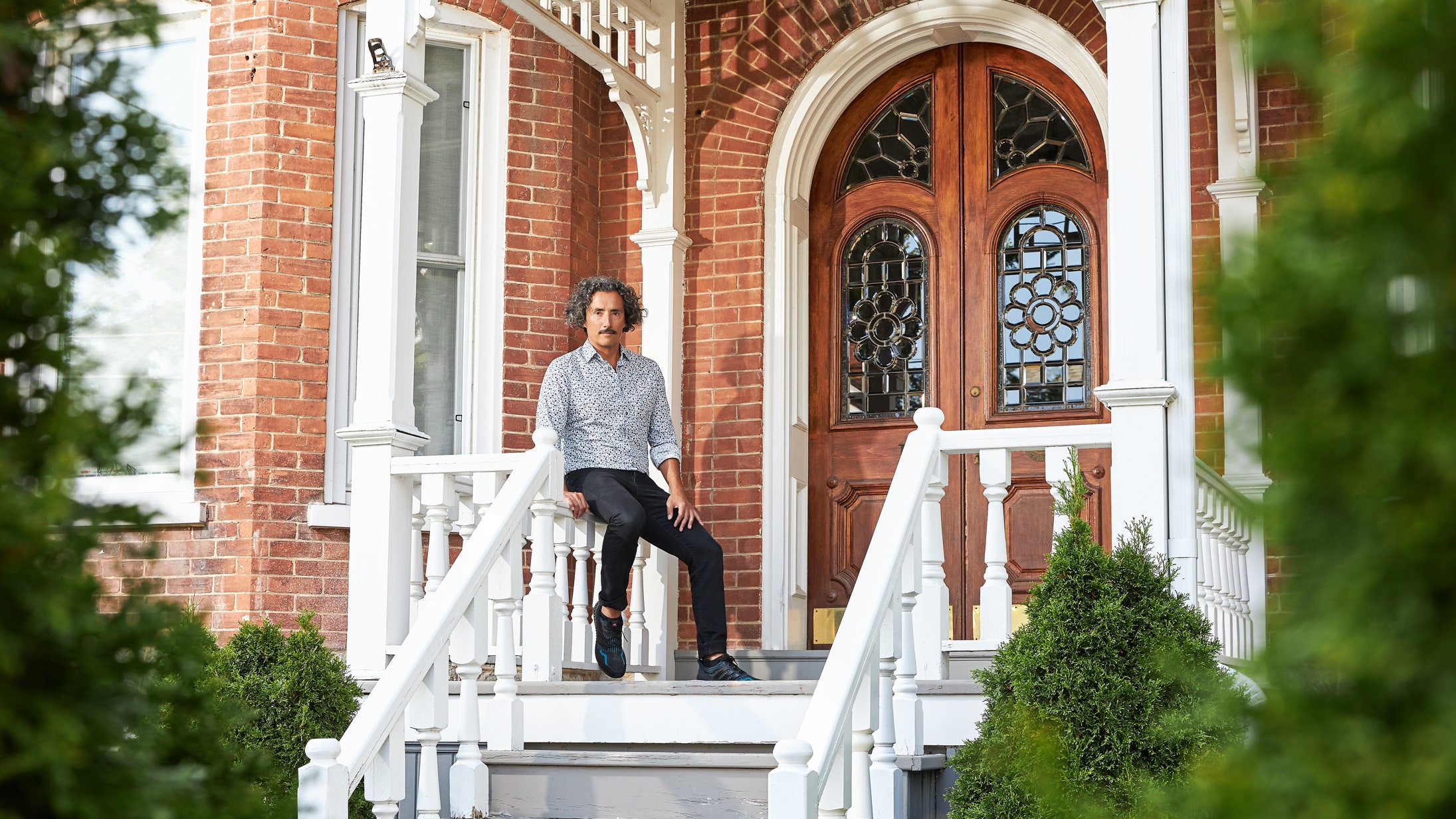Inside the Ontario Home of Artist Kent Monkman
Cree artist Kent Monkman’s painted, performance, and installation works have been part of the sea change in North American art, in terms of the acknowledgment and celebration of first nations and Indigenous communities. His pieces have been shown around the world, including in the 2019 solo show, “Mistikôsiwak: Wooden Boat People,” staged at the Metropolitan Museum of Art.
Monkman’s latest show? Welcoming patrons and guests to Château Miss Chief, a red-brick Victorian house in small-town Ontario, two and a half hours from Toronto. The town of Picton, (population 4,000), was once also the home of Sir John A. Macdonald. Macdonald was not only a barrister and former prime minister, but also played a significant role in the creation of Canada’s residential school system. That Macdonald lived in the same town is all part of the story of Château Miss Chief, and Monkman’s desire to reclaim traditional Western art practices. (Monkman’s work has also been the focus of controversy, due to its depiction of sexual assault. The artist has since apologized.)
“Château Miss Chief [may] function as a living museum for [my alter ego] Miss Chief Eagle Testickle, but it is also a home for a living artist,” Monkman explains. “The houses of Eugène Delacroix and Claude Monet became established as commemorative galleries after their deaths, but the château is unique in that [I welcome] visitors to the home, in the present, to share stories about Miss Chief.”
Built in the early 1900s, the house is grounded by parquet floors and old-school elegance. The wide staircase that sweeps up to the second floor provides an ideal vantage point from which to view examples of Monkman’s work, which are hung throughout the residence.
Although the building’s original elements, save for the kitchen and storage rooms, were well-preserved, the interiors required the fabulousness of Miss Chief, and a little bit of Monkman. To make those design decisions, Monkman worked closely with his longtime best friend, Mary Jane McCallum. The overall concept? Life with luxe.
“The house had incredible millwork, but it was dark, leaning toward austerity, especially in the living room,” McCallum says. “The idea was to juxtapose that with design elements that would bring in light and texture. For example, I wanted a long, white, marble table in the dining room and intricate woodwork in order to create a sense of balance. The paint colors throughout the house were chosen to be as bold as the artwork, while the furnishings needed to provide luxury, warmth, and comfort.”
The real standouts are, nonetheless, Monkman’s artworks, which line the walls throughout the house and are as arresting in a stately home as in a gallery setting. Some of the works currently installed at the château are the “Wâsê-Acâhkosak” (Shining Stars) from 2020. The series commemorates Monkman’s personal heroes in a group of medium-to-large-scale portraits. Visually, the paintings evoke the history of Western portraiture in order to canonize Indigenous sitters into cultural memory and flip the script in true Monkman form.
Up next for Kent Monkman is a solo exhibition at the Royal Ontario Museum, titled “Being Legendary” and set to open in fall 2022. He’s also working on a solo mid-career retrospective at the Denver Art Museum for 2023. As for the Château? “The château is complete and I accomplished what I wanted to,” Monkman says. “Perhaps it’s time to set up a studio in New York, in 2022….”


